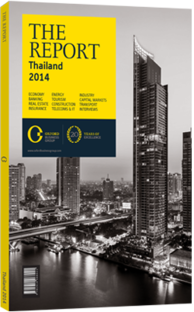OBG talks to Takanobu Ito, President & CEO, Honda Motor Company

Interview: Takanobu Ito
What changes were made to production and supply-chain operations following the floods of 2011?
TAKANOBU ITO: The event made us realise that Thailand is well connected to the world as one of the major supply sources of automobile parts and components. Instead of relocating parts production to other countries from the point of view of mitigating risk, we revisited our risk management measures by getting a clear grasp of the status of our supply-chain management, revisiting the production of outsourced parts in multiple locations and reviewing the design of parts and components where it is difficult to find alternative sources. Moreover, we worked together with our suppliers to develop business-continuity plans to be put in place in the event of a disaster. In the meantime, we believe that it is vital to work toward autonomous operations in each country by sourcing parts and manufacturing and selling products close to the customer.
How will the formation of the ASEAN Economic Community (AEC) benefit Thai-based carmakers?
ITO: As of today, there is already a mutually complementary supply of some automobiles and automobile parts in Asia. In the coming years, more countries are expected to begin putting more emphasis on export policies as their automobile industry evolves. We believe that the formation of the AEC will further accelerate this trend toward the mutually complementary supply of automobiles and automobile parts, and considering the future potential of the automobile industry in each country, we believe that Thailand will be one of the countries which is highly likely to benefit from the AEC.
How is the auto industry capitalising on incentives in Thailand for the production of green vehicles?
ITO: Thailand became the biggest automobile market in ASEAN in 2012. For Honda, it is one of our most important production centres, exporting vehicles to around 65 countries throughout ASEAN, Oceania, the Middle East and Africa. As the country is a centralised production location for the region, Honda is expanding our production capability here, as well as investing BT17.15bn ($560.8m) to build a new assembly plant in Prachinburi to produce fuel-efficient, sub-compact models. We aim to make the Prachinburi assembly plant our most advanced manufacturing facility in Asia and Oceania. Further, we are putting an emphasis on research and development of fuel-saving automobile innovations. Since 2012, Honda has introduced a variety of alternative-fuel automobiles to Thailand to satisfy the full range of customer demands and lifestyles, including the Honda City CNG, the Civic and Jazz hybrids, the E85 engine and the Eco-car.
Will growing investment in Thailand’s car manufacturing capacity impact the industry’s development?
ITO: Japanese automakers have a long history in the automobile industry here, and compared to neighbouring countries Thailand has accumulated much more experience through each company. The total amount of investment made in the area of automobile production as well as in automobile development is much greater than that of other regional countries. As such, we believe that Thailand will maintain its advantage over the Asia-Pacific region for some time to come.
To what extent has the introduction of the minimum wage impacted the automotive industry?
ITO: Demand for wage increases is inevitable in any country. While it may have a short-term impact on automotive manufacturers operations, the industry will make efforts to overcome that impact through everyday operations, including technological innovation and cost cutting, specifically through a reduction of loss and waste. Such measures will eventually lead to further increases in the income of Thai people generally.
Honda has no intention of relocating our production operations for the purpose of avoiding wage increases. Our basic approach to manufacture and sell our products close to the customer will remain unchanged.
You have reached the limit of premium articles you can view for free.
Choose from the options below to purchase print or digital editions of our Reports. You can also purchase a website subscription giving you unlimited access to all of our Reports online for 12 months.
If you have already purchased this Report or have a website subscription, please login to continue.

